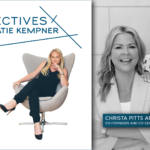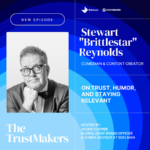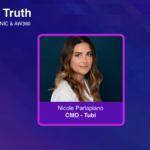By Roger Sho Gehrmann, VP of Integrated Partnerships, MassiveMusic
Before your brand ever said a word, it could have dropped a beat. Not just any beat — the beat.
A low-end pulse so iconic it didn’t just shape music, it rewired culture. The Roland TR-808 didn’t sneak in the backdoor. It kicked it off the hinges with a sub-bass boom.
For brands, this dynamic attraction is gold. The 808 doesn’t beg for attention. It takes it. It’s not polite or “realistic.” It’s the opposite: abstract, futuristic and primal. That’s exactly what brands need in a world of skippable ads, muted autoplay, and 1.7-second attention spans.
From Flop to Foundation
You’ve felt it. In the robotic groove of “Planet Rock.” The velvet pulse under “Sexual Healing.” The stripped-back genius of “Paul Revere.” The futuristic bounce of OutKast’s “The Way You Move.” It’s in Beyoncé & Jay-Z’s “Drunk in Love,” Daft Punk’s “One More Time,” every SoundCloud mixtape, and every TikTok that’s ever made your chest vibrate. The 808 isn’t just an instrument. It’s a cultural interface, a machine that defined a mood, a movement, and whether you realise it or not, the sonic texture of pop culture.
Let’s not forget the twist in the tale. The Roland 808 was a commercial flop. Released in 1980, it was ridiculed for sounding too fake. The synthetic sound wasn’t drum-like enough. Musicians turned their noses up.
But failure has a funny way of turning into folklore. Especially when affordability and attitude intersect. Early hip-hop artists, electro pioneers, and underground DJs picked it up because it was cheap, weird, and raw. Hank Shocklee of Public Enemy said, “It didn’t sound real. That’s what made it better.”
From there, it became the blueprint of everything: electro, hip-hop, techno, trap, pop. Try naming a genre from the past 40 years that didn’t get touched by the 808. You can’t.
Why Advertisers Should Care
Technology has always been the hidden hand of culture. The Technics SL-1200 helped birth DJ culture. The VHS gave rise to MTV. The Roland 808? It democratised rhythm. It shaped how we listen to music. How we move. How we react to rhythm and repetition. It gave us a new language, and smart brands are fluent in it. And in advertising, that’s everything.
Nike leaned on trap-style 808 beats to sync up with streetwear and basketball culture. Beats by Dre built an entire brand on the thump of credibility — often powered by 808-inspired low-end. Apple’s HomePod spots? Dripping in minimal 808 groove. TikTok’s own sonic branding is heavily influenced by the 808.
When designing a sonic identity, the first question we ask isn’t “what genre fits the brand?” It’s “what emotion do we want to hit?” The 808 hits confidence, swagger, rebellion and sometimes even comfort. You can’t ignore it, which is exactly the point.
In testing, we’ve seen that the 808 literally moves people. Sub-bass frequencies trigger a physical and emotional response that high-pitched sound logos just can’t replicate. It’s not nostalgia. It’s neurology.
It also helps that Roland, the brand behind the 808, still gets it. They’re not just selling gear. They’re backing the artists who use it. In 2023, Roland sponsored Bandcamp Friday, supporting independent musicians by waiving platform fees and putting real money back into real music. In an era of corporate noise, that kind of support speaks volumes—and it echoes loudest in creative communities.
The Strategic Weapon
For advertisers, this is a cue. Authenticity isn’t just about aesthetic, it’s about action. The brands that back culture win culture.
Sonic branding isn’t just about having a jingle. It’s about owning a frequency. When done well, a single sound can become shorthand for everything your brand stands for. There have been a few notable examples of campaigns that utilize the 808.
Apple’s “Welcome Home” spot for the HomePod was directed by Spike Jonze and was full of hiphop greats including FKA twigs, Anderson .Paak and rife with 808 bass. Nike used 808-style percussion in its “You Can’t Be Stopped” ad to bring cohesion and pace to the edit. Meanwhile Beats by Dre tapped into its hip hop roots for “The Game Before the Game” with an 808-driven score that underscored emotion, energy and identity with no words necessary.
The 808 proves that a machine can create meaning. That synthetic doesn’t mean soulless. That imperfection, when wielded with intent, becomes unforgettable. It also teaches us something valuable: You don’t need to sound like everyone else to resonate. In fact, you shouldn’t.
So the next time your brand speaks, ask yourself: Are we being heard? Or are we just making noise? Because the great ones don’t chase culture. They drop the beat — and let culture come to them.











